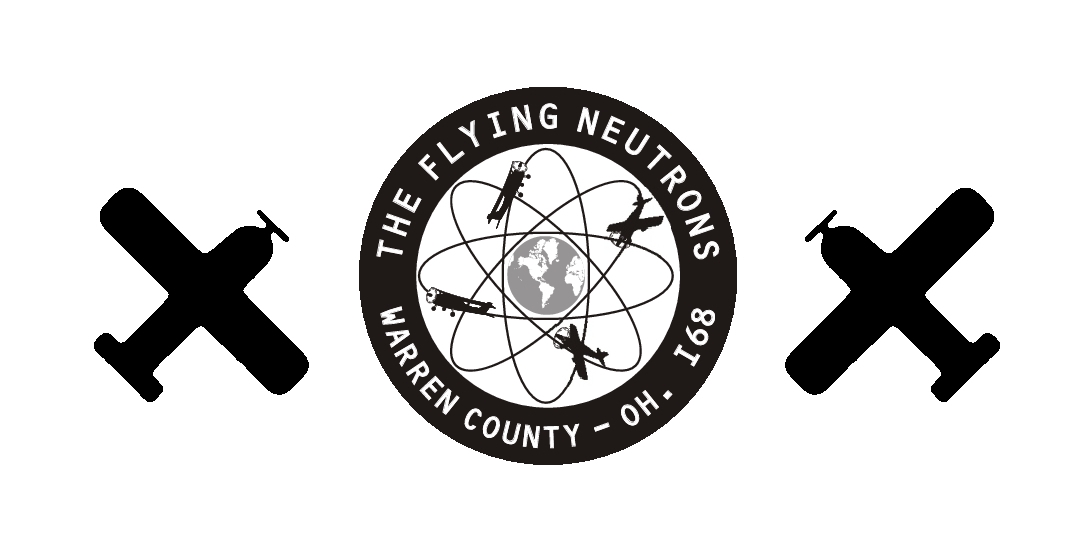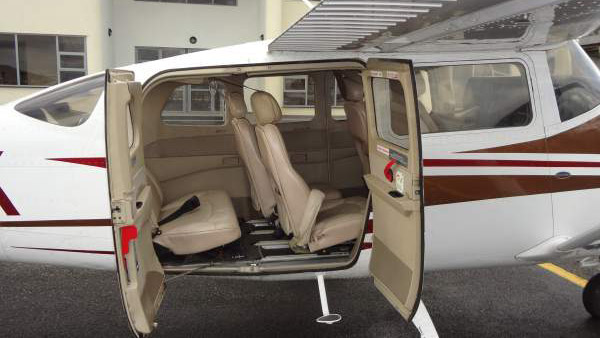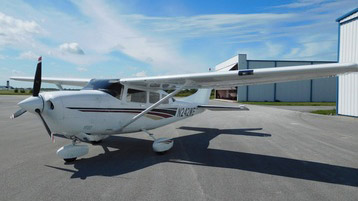For a club looking for a larger single-engine aircraft there are only a few options, with the most popular generally being the Piper Cherokee Six/Saratoga line or the Cessna 206 or Cessna 210. The Flying Neutrons based at Lebanon-Warren County Airport (I68) between Cincinnati and Dayton, Ohio have experience with both. The club just purchased a Cessna 206, which will be replacing a Cherokee Six that they have been operating for about 30 years.
 “We surveyed the club and the club said we really want a six-place airplane, we really want something we can take my wife and three or four kids and you can’t do that in a 182. That’s why the 206,” Operations Officer Steve Pollack said.
“We surveyed the club and the club said we really want a six-place airplane, we really want something we can take my wife and three or four kids and you can’t do that in a 182. That’s why the 206,” Operations Officer Steve Pollack said.
Prices vary greatly depending on the age, total time, and whether the engine is turbocharged or not. A naturally aspirated Cessna 206 dating to the 1960s or 1970s generally has a price range between $90,000 to $150,000. A late-model, turbocharged Cessna 206 has a purchase price ranging from about $300,000 for a 2000 to $600,000 for a model just a year or two old.
The club wanted to augment its fleet with a true cross-country aircraft, but didn’t want a turbo. “We wanted a naturally aspirated 206 for operational reasons – we’re in the Midwest, we don’t need [a turbo]. But the problem with that was only 15 percent of 206s made were naturally aspirated,” Steve said. “They are hard to find and they are very expensive because they are in demand. The average 206 on the market is $300,000 or higher. For a 2000, if you look at 1999-2000 you’ll be at $270,000-$280,000 somewhere in there and then it goes up as you get newer.”
The Flying Neutrons were able to find what they were looking for—a 1999 naturally aspirated 206H—for $200,000. The price fit the club’s budget because they took a risk. The aircraft had a prop strike, but has since flown 300 hours on the repaired engine with a new crank and new cam. The club also spent $25,000 to upgrade the avionics including a Garmin 530 GPS and a Garmin 345 transponder with ADS-B capability.
The naturally aspirated 300-hp Lycoming IO-540 burns about 15 to 17 gph. The Flying Neutrons plan to charge $175 an hour, Tach time wet.
 One of the advantages of a 206 is it’s simple to maintain. “It’s built just like the other Cessnas. That’s what’s nice about it,” Steve said. “It’s just a Cessna.” A typical annual runs approximately $1,900 (28 hours of work) each year, he said.
One of the advantages of a 206 is it’s simple to maintain. “It’s built just like the other Cessnas. That’s what’s nice about it,” Steve said. “It’s just a Cessna.” A typical annual runs approximately $1,900 (28 hours of work) each year, he said.
However, he did note that it is a heavier airplane than most pilots are used to so care needs to be taken on landing. If a pilot drops it in, it’s possible to bend the gear box that supports the spring steel landing gear. Although he said the nose gear is very robust, if you porpoise the airplane and hit the nose gear on landing you can actually bend the firewall.
The Flying Neutrons were interested in the 206 because it was easier to insure than the Piper Saratoga. “We were actually looking for a Saratoga to replace the Cherokee Six and the problem with that was the insurability,” Steve said. “You needed 300 hours of pilot time, you needed an instrument rating, and you needed I can’t remember how many hours in type, 50 I think.” None of that was required for the 206. The rate for the 206 is similar to what the club pays for it’s 182 because both aircraft have similar hull values and the insurance company “didn’t extract a penalty” for higher horsepower for the 206. The cost to insure the 206 is $7,700 each year.
The 206 is a lot like a 182, so there is consistency in training, checkouts, and preflights, Steve said. The club doesn’t plan to use the aircraft for primary training or instrument training, although if someone wanted to pay the higher hourly rate and fly the 206 for their advanced ratings they could. However, members wishing to use the aircraft for cross country flights would get preference over someone looking to do IFR work.
Although the insurance company doesn’t have any specific requirements to fly the aircraft besides a checkout, the club will require members to have 10 hours of high performance time, 100 hours PIC or an Instrument Rating and they must complete the club’s ground school for the aircraft and pass a written test. In addition, members will “have to pass a pretty rigorous flight check, which includes a full gross weight cross country that is going to require you to balance the airplane properly so you know how to operate it correctly, know where all the weight issues are, make sure it's in CG,” Steve said.
The purpose of this plane is to be able to take a large load, whether it’s people or cargo, and go. It has a useful load of 1,390 pounds and carries 88 gallons of usable fuel with a range of 840 miles. The aircraft seats six, although in Canada it is only certified for five people. On the flight from Florida to Ohio after the club purchased the plane they averaged about 145 knots true airspeed, although the book says you’ll get 133 knots TAS at 10,000 feet, Steve said.
“The 206 has four relatively comfortable seats and two seats for smaller people in the back, but it does not have a huge baggage compartment,” Steve said. “There’s a huge space between the pilot row to the first passenger row, so what you have to end up doing is putting baggage in that area because there’s just not enough room in the back.”
The aircraft has a pilot’s door on the left and a clamshell door on the back right, but access is not as easy as it is in the Cherokee Six. One of the flaws of the aircraft is to open the rear doors the flaps must be up. “If you have an emergency and have to land off airport and put the flaps down, you can’t open the rear doors fully,” Steve said. “So to egress, you have to crack the main back door, and then lower the flaps to have enough room to unlatch the rear door so people can get out of the back of the airplane.”
 When thinking about a 206, fun is probably not the first thought that comes to mind. However, “fun can be defined in a number of ways,” Steve said. “Flying a high performance, heavy machine properly is fun. Flying an airplane that requires skill and having a successful outcome of that flight, being able to take an airplane with your loved ones on a trip, and actually getting an airplane that can do what you want it to do, the sense of satisfaction and fun that you get out of that is equivalent or similar to greasing a landing in an Aeronca.”
When thinking about a 206, fun is probably not the first thought that comes to mind. However, “fun can be defined in a number of ways,” Steve said. “Flying a high performance, heavy machine properly is fun. Flying an airplane that requires skill and having a successful outcome of that flight, being able to take an airplane with your loved ones on a trip, and actually getting an airplane that can do what you want it to do, the sense of satisfaction and fun that you get out of that is equivalent or similar to greasing a landing in an Aeronca.”
Adding a six passenger aircraft may attract members to your club who have a need for a larger aircraft to do cross country travel. The Cessna 206 is similar to the 182 so the transition should be fairly easy for members, and the maintenance costs should be similar. “I look forward to using this airplane in a way that is fun because it can do things that the other airplanes cannot,” Steve said. “It can haul a huge load with comfort and reasonable speed.”
While the club just got the plane and hasn’t had the opportunity to check members out in it yet, Steve said it has generated a tremendous amount of excitement in the club. “Members are chomping at the bit to get in the left seat.”
|
Operating Cost |
3 |
|
Maintenance |
4 |
|
Insurability |
4 |
|
Training |
3 |
|
Cross Country |
5 |
|
Fun Factor |
3 |
|
Overall |
3.7 |